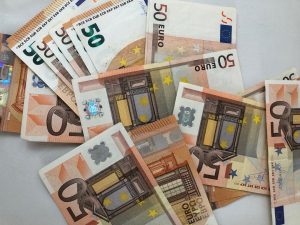Forex trading, also known as foreign exchange trading, is a popular investment option for individuals looking to diversify their portfolio. It involves buying and selling different currencies with the aim of making a profit from the fluctuations in their exchange rates. However, like any other investment, there are charges associated with forex trading that investors need to be aware of. In this article, we will explore the different charges on forex trading and how they can affect your overall profitability.
Spread
The spread is the difference between the bid price and the ask price of a currency pair. The bid price is the price at which you can sell a currency, while the ask price is the price at which you can buy a currency. The spread is the commission charged by the broker for executing your trades. Brokers usually offer fixed or variable spreads, and the size of the spread can vary depending on market conditions.
For example, if the bid price of EUR/USD is 1.2000, and the ask price is 1.2005, the spread is 5 pips. If you buy EUR/USD at the ask price of 1.2005 and then sell it at the bid price of 1.2000, you will incur a loss of 5 pips. The size of the spread can significantly affect your profitability, especially if you are a frequent trader.
Commission
Some brokers charge a commission for executing forex trades. The commission is usually a fixed amount per lot or a percentage of the trade’s value. The commission is usually higher for exotic currency pairs that are less liquid and have wider spreads.
For example, if your broker charges a commission of $7 per lot, and you trade one lot of EUR/USD, you will pay $7 in commission. If you trade 10 lots of EUR/USD, you will pay $70 in commission. The commission can add up quickly, especially if you are a high-volume trader.
Swap
A swap is the overnight interest rate differential between two currencies in a currency pair. When you hold a position overnight, you either earn or pay the swap depending on the interest rate differential between the currencies in the pair. The swap is usually credited or debited to your account at the end of each trading day.
The swap can be positive or negative, depending on the direction of your trade and the interest rate differential. If you buy a currency with a higher interest rate than the currency you are selling, you will earn a positive swap. If you sell a currency with a higher interest rate than the currency you are buying, you will pay a negative swap.
For example, if you buy AUD/USD, and the interest rate in Australia is higher than the interest rate in the US, you will earn a positive swap. If you sell AUD/USD, you will pay a negative swap. The size of the swap can vary depending on the interest rate differential and the size of your position.
Slippage
Slippage occurs when the price at which your order is executed is different from the price you intended to execute the order. Slippage can occur during periods of high volatility or low liquidity when the market moves quickly. The difference between the intended price and the executed price can affect your overall profitability.
For example, if you intend to buy EUR/USD at 1.2000, but due to slippage, your order is executed at 1.2005, you will incur a loss of 5 pips. Slippage can be unpredictable, and it can affect both your entry and exit prices.
Conclusion
Forex trading can be a lucrative investment option, but it comes with various charges that can affect your overall profitability. The spread, commission, swap, and slippage are the main charges associated with forex trading. It is essential to understand these charges and factor them into your trading strategy to maximize your profits and minimize your losses. Choosing a reputable broker with transparent fees and a competitive pricing structure is crucial for successful forex trading.





